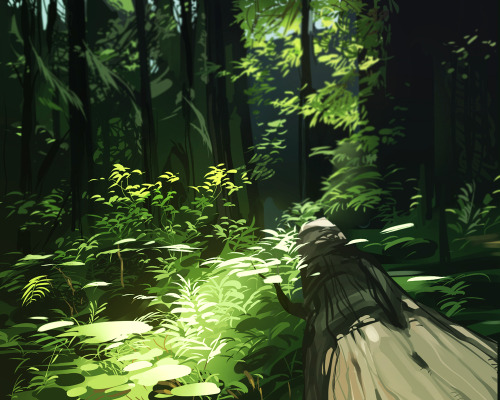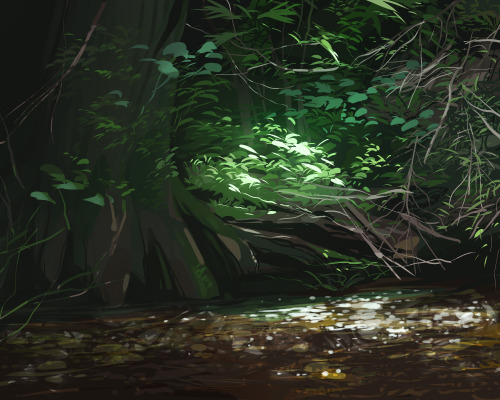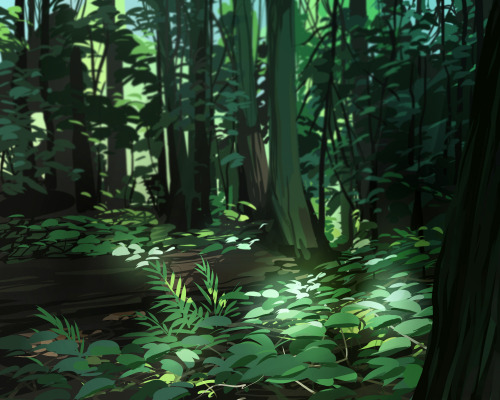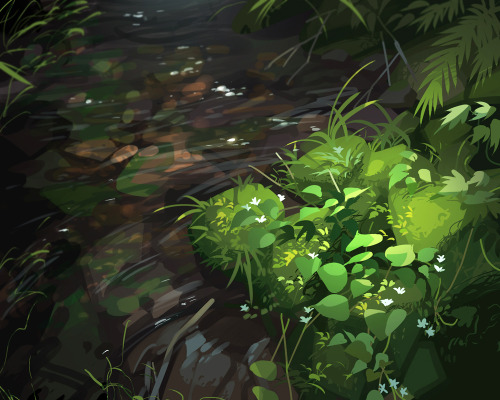So I Downloaded A New Art Program Recently
so I downloaded a new art program recently

It’s called Krita. Maybe you’ve heard of it, but in case you haven’t, seriously, check it out! It’s really nice!
The best way I can describe this program is that it’s a combination of Easy Paint Tool SAI and Photoshop. And the best part is the program is completely free to download from their website. I think what I like most about it is that not only does it have a Stablizer like SAI does, but it has practically all the tools I ever use from Photoshop. Not saying it’s going to replace SAI or PS for me (at least not yet; I’m still learning my way around Krita lol), but it’s probably the only thing I’ve ever found that is coming close to doing it.
I put some screenshots under the cut!
Keep reading
More Posts from Artrefforsteph and Others










The getting Started Course is here, go check it out here: http://cgcookie.com/concept/cgc-courses/getting-started-in-digital-art/
HOLY FREE ART PROGRAMS BATMAN
I’ve had this list sitting around for a while (in case I ever want to try something new) and I thought I’d share it, because why the hell not, everybody loves free stuff. I’ve only used a couple, so for all I know these could be complete shit. BUT YOU NEVER KNOW, RIGHT?
*= available for both windows and mac os
GIMP * - Does a lot of the same stuff as Photoshop.
FireAlpaca * - Similar to Paint Tool Sai, so it’s a good alternative for Mac users.
Autodesk Sketchbook Copic Edition * - Simulates the look of copic markers.
MyPaint * - Basic stuff, nothing fancy.
Pinta * - Drawing program modeled after paint.NET.
Inkscape * - Vector/drawing program meant to be similar to Illustrator.
ArtRage * - Digital painting program; you can get the trimmed down version for free or buy the full version with more features.
Sumo Paint * - In-browser drawing app.
DAZ Studio * - Some sort of 3D model poser thing.
Pencil * - Software for animating.
SketchUp * - Tool for making 3D models. Looks handy for stuff like architectural drawings.
Blender * - Pretty popular 3D software.
escape motions * - Some browser apps, fun to fiddle with when you’re bored (the fluid fire simulation is pretty cool imo).
Twistedbrush (Pixarra) - Seems to be meant for replicating the look of traditional media.
Pixia/Phierha - A popular program in Japan, according to the website.
Krita - This was originally made for Linux and it looks like the developers haven’t ironed out all of the kinks in the Windows installer.
Artweaver - Another trimmed down free thing if you don’t want to buy the full program.
paint.NET - Pretty basic kit, probably good for simple stuff.
Project Dogwaffle - I’m not sure what this one is all about because I couldn’t stop laughing at the terrible website.
Speedy Painter - Lightweight digital painting program.
mtPaint - Originally made for pixel art; simple enough to run on older computers.
Chasys Draw IES - Supposed to be some sort of drawing+image editor thing.
PaintRibbon - Seems to be another plain old basic image editor.
DrawPlus - Looks like it’s made for graphic design and vector stuff.
SmoothDraw - I’m guessing this is a basic thing for people who don’t want to bother with complicated stuff.
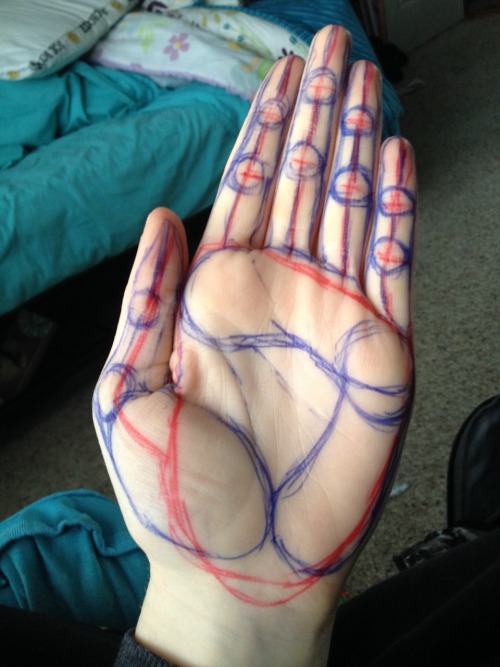
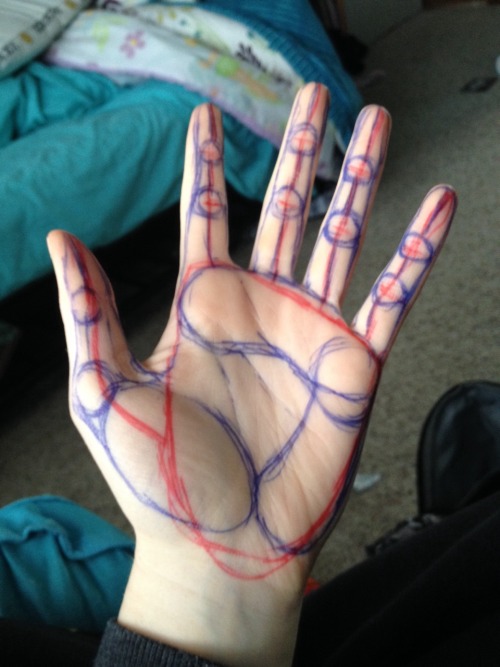
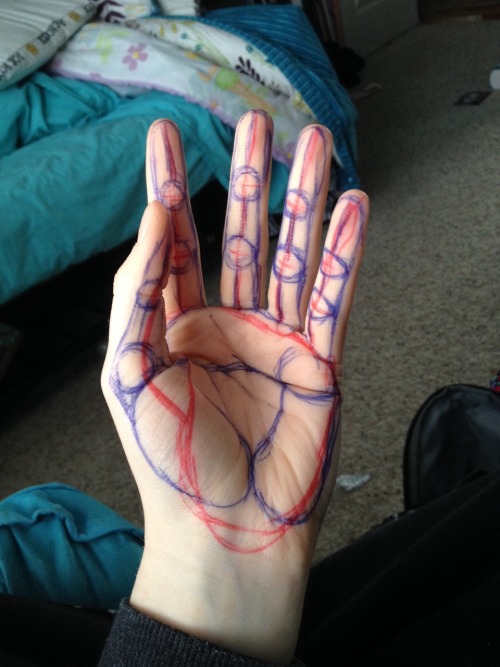

I always struggled drawing hands before anyone told me what to do. So here is a HANDy dandy drawing reference to see the steps on an actual hand. There are three big muscles in the palm. The thumb lump is most important because without it you’ll never even get the shape right. Circle up the knuckles and draw bendy lines (red) to connect them. Make sure the fingers go from medium-tall-short-shortest just slightly (index=>pinky finger). Notice the big red squareish shape around the palm-that’s the first thing I do. Note: every infer has 2 knuckles don’t forget the thumb does too…just in a weird way.
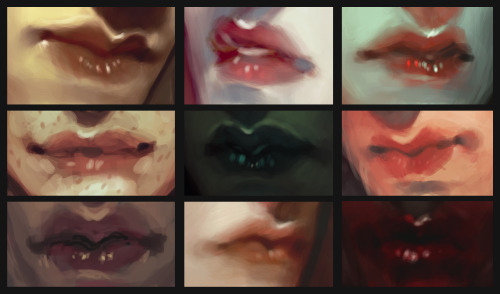
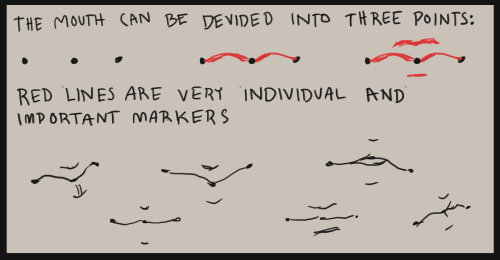
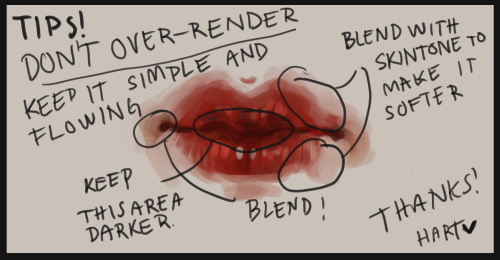
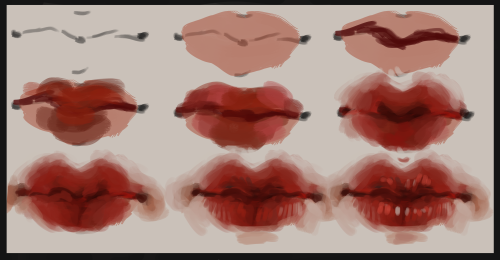
i’ve had more than one anon asking about lips and i’ve tried to do a little tutorial before without posting it simply because i feel like my mouths aren’t really that special. they are always really quick and not super detailed, but i tried to put something together anyway! as always this is not a depiction of how you best draw mouths or how you should paint them, this style is just how i draw them.
and of course, i added some examples. i use this method almost everytime painting lips these days.
i just found this website that can randomly generate a continent for you!! this is great for fantasy writers

plus, you can look at it in 3d!

theres a lot of viewing options and other things! theres an option on-site to take a screenshot, so you don’t have to have a program for that!
you can view it here!


I’ve been seeing a lot of Big Hero 6 concept art and I wanted to set a brush to kind of mimic the graphite style of some of the sketches. I don’t have a “fully functional” version of SAI, so I tried to make this as simple as possible.

Low Light Likeness - Submitted by AstronomyForTwo
#a3a0a8 #514d8c #3b1287 #190f42 #0f031c
HIIRAREFS: Basic and Intermidiate guide to colouring in
What better day to end the year then with a basic guide to colouring- This is for beginners or intermediate artists. Colouring is a big part to an art piece, whether you decide to use colours or not, that’s up to you, but for the most part, having some knowledge on appliance of colour will really help you out!
____________________________________________
ARTISTS WITH AN INSPIRING KNOWLEDGE OF COLOUR APPLICATION! Please take the time to have a look at other artists work so that you ca research and get inspired!
Gullacass: Uses brights, dulls and pastels to create brilliant guro, pop and macabre pieces| DA + TUMBLR
TinyCalcium: Old friend of mine who explores brights and mustard colours and places them as a foundation for their work | TUMBLR
BeastPop: Talented with opposing and Triwheel colours. Outstanding cell-shading, and knows how to flexibly bend colour form to their will in popart. | DA
H0stel: Fantastic composition of light direction and applies colour to bodies based on ambient occlusion. | TUMBLR
_____________________________________________
COLOUR SLANG: I use some strange slang to express colour types and shades as well as groups. Although they may not be canonically correct, I will use these terms to describe colour palates to the best of my ability! Analogous: Colours that are near or adjacent to each other on the colour wheel, EG: Red and Orange
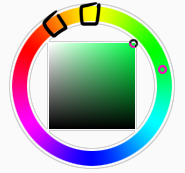
Oppositional/complimentary: Colours that are opposed or opposite from each other on the colour wheel, EG: Cherry and Green
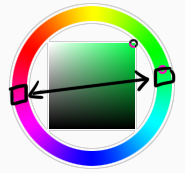
Triadic: Colours that form a triangle on the Colour wheel, EG: Cyan, Magenta and Yellow. These three colours when mixed together will make black.
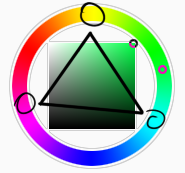
Arrowtype/Quadcolour: Four colours, that generally form an arrow shape on the colour wheel.
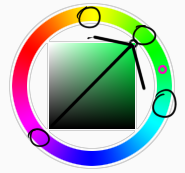
Tetradic: Colours that form a rectangle or square in the colour wheel
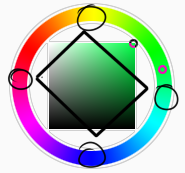
Neons: The very brightest you can get a colour, be careful where you use them as they can look ugly together at the most. Try to use neons when you are adding bright glowing objects to your piece. Neons are great for highlights.

Brights: Slightly washed Neons. Appropriate if you have characters that are colourful.

Washed: Very washed brights with a hint of grey. These are also useful for colourful characters.

Pastels: Colour with white in them to make them seem light.

Baby Pastel: Pastel with even more white in them, good for subtle highlights.

Darks: Colour with black added to them. Used mostly for lineart.

Mustards: Colours with dark grey added to them

Earthen: Colours with brown added to them

Warm and Cool colours: Warm colours are colours that range fromMagenta to Yellow. Cool ones range from Lime to Fuchsia.

Straight tones: A greyscale palate. or a straight scale of one colour from black to it’s neon form.

Warm and cool tones: Warm tones are a greyscale mixed with warm colours and cool tones are greyscale mixed with cool colours.

Skintones: Warm washed or pastel colours generally used to colour in skin, but they don’t have to be warm at all! ( I will not show you a palate for this however)
______________________________________________
WHAT TO AVOID WHEN COLOURING: beginner artists, tend to go ahead and start by colouring their line art with neon and mustard colours. Neons are not necessarily good for base colours unless the character has a glow.
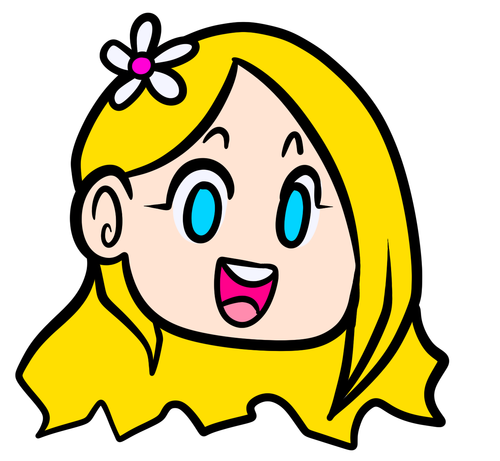
I often see lazy attempts to shade, often a beginner artist with use an airbrush and use black and white to shade and highlight their piece. This is not very effective, and I’m sorry to say… It’s kind of gross as well. Try to avoid being lazy. If you have a piece that has bold black lines, avoid using soft shading and airbrushing at this point of time.
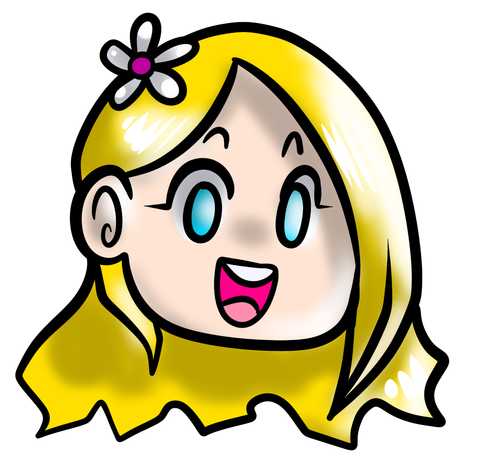
Black and white isn’t always the best option when colouring in your piece, but it also depends on the style you are trying to convey. If you plan on only using straight tones to colour in a piece, black and white is good.
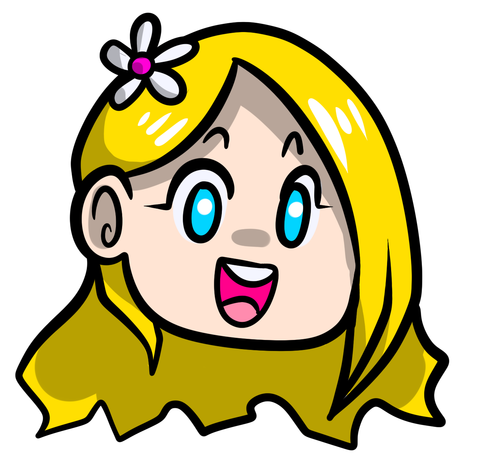
A GOOD BASIC WAY TO COLOUR For this basic tutorial I will show you a nice way to colour in a piece with bold lines. I will be using Minty’s Classic character as an example.
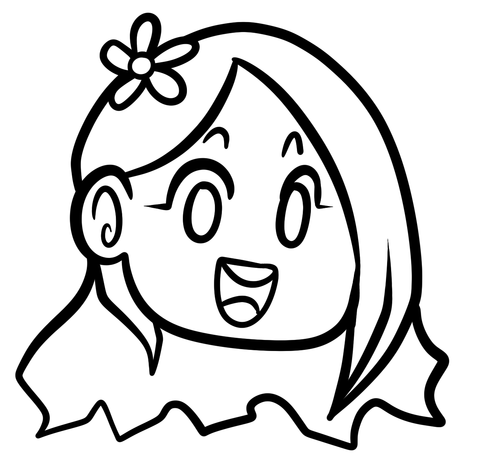
Begin with using brights that have been washed down a little and washed skin tones if your character is human based. Avoid using neons or mustards if you are able. If there is white on the character, such as the white on an eyeball or the teeth, consider using baby pastels. For Minty’s eyeballs I have used a baby pastel blue. I have chosen to use a darker and more washed version for her Irises.
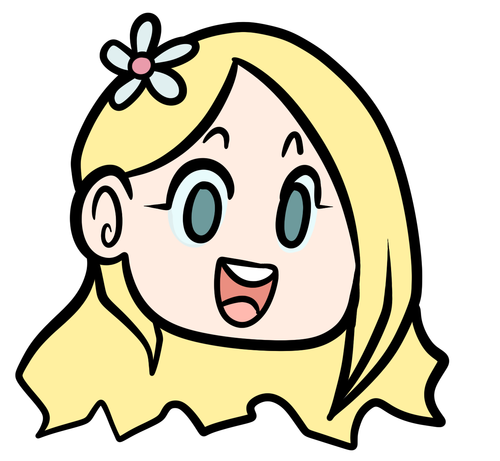
With you foundation colours placed down, use a washed warm colour for the skin tone, such as a salmon. If the character’s hair or fur is warm coloured, use a pink or red orange to shade that as well. Use the cell shading technique. This may mean you will have to erase some of your shading so be sure to do this on another layer. For your baby pastels, you can use a regular pastel to shade it. For Minty’s eyes I have used pastel blue and lowered the opacity by a little.
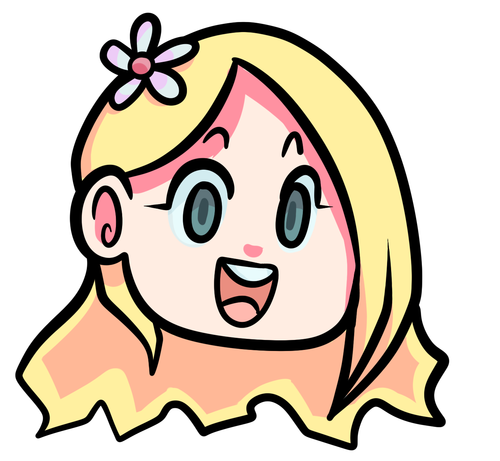
For Highlights, I have chosen to use baby pastel yellow. I wanted the piece to be warm.
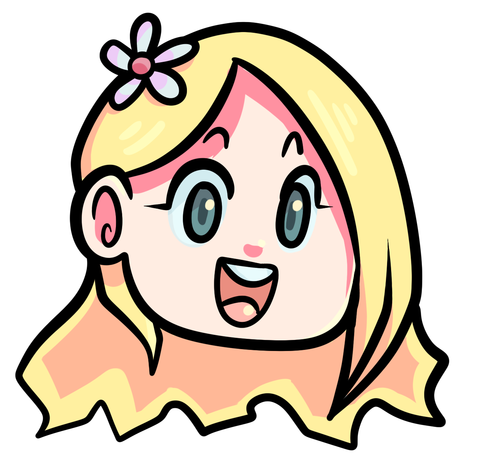
Applying a light airbrush over the top of the piece makes it feel a little softer. I have also applied the airbrush over the initial borders to create colour bleed, giving a very subtle reflective approach.
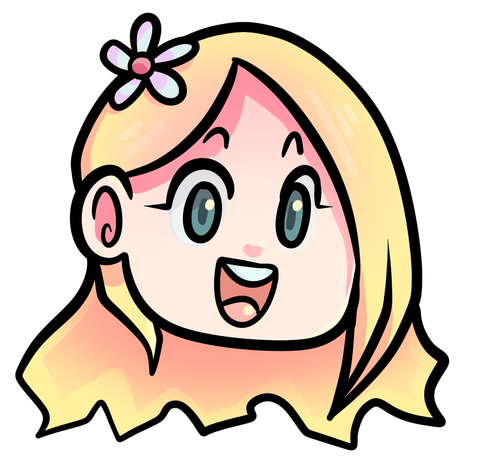
Colouring your line art layer, particularly if you have bold lines, can really make a piece look more interesting! I like to leave the overall outline black. You can gradient and bleed colour in your line art as well
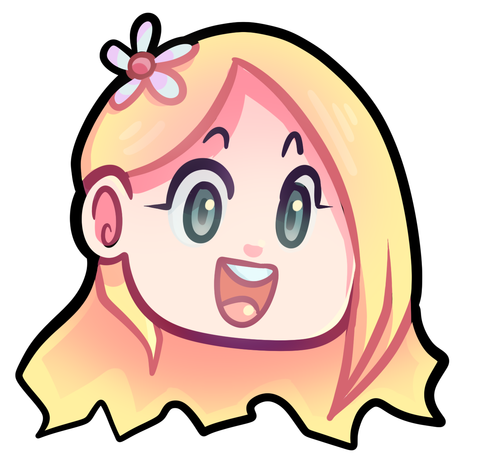
Light tracing is a technique lots of artist’s use, where they run a sharp line of highlight next to line art to divide borders.
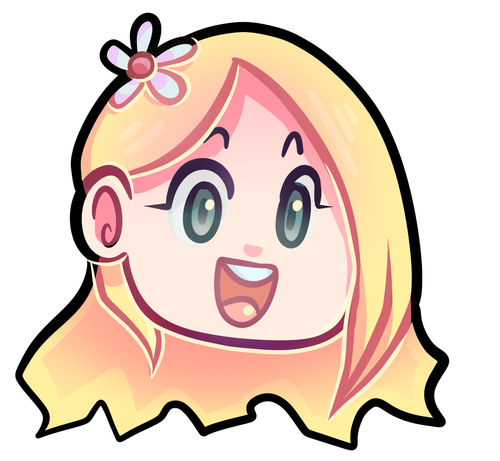
This looks a lot nicer than the black and white shading, doesn’t it!? __________________________________________
This is a very very simple guide to applying colour to your piece! If This helped, please reblog and share this guide around!
If you have any questions or feedback, don’t be afraid to send me a message!
-
 daengeli liked this · 3 months ago
daengeli liked this · 3 months ago -
 cryingunderthewaterfall liked this · 10 months ago
cryingunderthewaterfall liked this · 10 months ago -
 kuribenkei liked this · 11 months ago
kuribenkei liked this · 11 months ago -
 siterlas reblogged this · 1 year ago
siterlas reblogged this · 1 year ago -
 graffitistars liked this · 1 year ago
graffitistars liked this · 1 year ago -
 misssnicket reblogged this · 1 year ago
misssnicket reblogged this · 1 year ago -
 crazy-grrrl-on-the-computer reblogged this · 1 year ago
crazy-grrrl-on-the-computer reblogged this · 1 year ago -
 catbui liked this · 1 year ago
catbui liked this · 1 year ago -
 anonymusuko liked this · 2 years ago
anonymusuko liked this · 2 years ago -
 ilsanknj reblogged this · 2 years ago
ilsanknj reblogged this · 2 years ago -
 ilsanknj reblogged this · 2 years ago
ilsanknj reblogged this · 2 years ago -
 ilsanknj liked this · 2 years ago
ilsanknj liked this · 2 years ago -
 terrific-togekiss reblogged this · 2 years ago
terrific-togekiss reblogged this · 2 years ago -
 wolf-mask liked this · 2 years ago
wolf-mask liked this · 2 years ago -
 tutoriarts reblogged this · 3 years ago
tutoriarts reblogged this · 3 years ago -
 selkietutorials reblogged this · 3 years ago
selkietutorials reblogged this · 3 years ago -
 heeelv reblogged this · 4 years ago
heeelv reblogged this · 4 years ago -
 seabananapop liked this · 4 years ago
seabananapop liked this · 4 years ago -
 thekeyof-a liked this · 4 years ago
thekeyof-a liked this · 4 years ago -
 ineedtomakecharacters reblogged this · 4 years ago
ineedtomakecharacters reblogged this · 4 years ago -
 kevinelsarco reblogged this · 4 years ago
kevinelsarco reblogged this · 4 years ago -
 jqjgqjg liked this · 4 years ago
jqjgqjg liked this · 4 years ago -
 bblobbsblog liked this · 4 years ago
bblobbsblog liked this · 4 years ago -
 pointlesslygay liked this · 4 years ago
pointlesslygay liked this · 4 years ago -
 cmajorlips liked this · 4 years ago
cmajorlips liked this · 4 years ago -
 feversxmirrors liked this · 4 years ago
feversxmirrors liked this · 4 years ago -
 moonsp1r1t reblogged this · 4 years ago
moonsp1r1t reblogged this · 4 years ago -
 courtofdolls reblogged this · 4 years ago
courtofdolls reblogged this · 4 years ago -
 danveresque reblogged this · 4 years ago
danveresque reblogged this · 4 years ago -
 iwillbedeadbeforetheyfindout liked this · 5 years ago
iwillbedeadbeforetheyfindout liked this · 5 years ago -
 independentbeverage reblogged this · 5 years ago
independentbeverage reblogged this · 5 years ago -
 independentbeverage liked this · 5 years ago
independentbeverage liked this · 5 years ago -
 spicedsaltren liked this · 5 years ago
spicedsaltren liked this · 5 years ago -
 blueberry-912 liked this · 5 years ago
blueberry-912 liked this · 5 years ago -
 nemo-of-house-hamartia reblogged this · 5 years ago
nemo-of-house-hamartia reblogged this · 5 years ago -
 nemo-of-house-hamartia liked this · 5 years ago
nemo-of-house-hamartia liked this · 5 years ago -
 flosffr reblogged this · 5 years ago
flosffr reblogged this · 5 years ago -
 z4chstone liked this · 5 years ago
z4chstone liked this · 5 years ago -
 nommbiness liked this · 5 years ago
nommbiness liked this · 5 years ago -
 4giorno liked this · 5 years ago
4giorno liked this · 5 years ago -
 trifern reblogged this · 5 years ago
trifern reblogged this · 5 years ago -
 li-of-the-philippines liked this · 5 years ago
li-of-the-philippines liked this · 5 years ago -
 zoiechance liked this · 5 years ago
zoiechance liked this · 5 years ago -
 honeybaublebee liked this · 5 years ago
honeybaublebee liked this · 5 years ago -
 potatofluffednotfried liked this · 5 years ago
potatofluffednotfried liked this · 5 years ago -
 a-box-o-jills reblogged this · 5 years ago
a-box-o-jills reblogged this · 5 years ago
NSFW because there will probably be nude refs | this is a side blog to sort all of the art stuff I need | none of it is mine
151 posts
